

Zitierweise / cite as:
Payer, Alois <1944 - >: Chronik Thailands = กาลานุกรมสยามประเทศไทย. -- Chronik 1873 (Rama V.). -- Fassung vom 2016-11-27. -- URL: http://www.payer.de/thailandchronik/chronik1873.htm
Erstmals publiziert: 2013-09-10
Überarbeitungen: 2016-11-27 [Ergänzungen] ; 2016-09-18 [Ergänzungen] ; 2016-05-25 [Ergänzungen] ; 2016-04-26 [Ergänzungen] ; 2016-04-14 [Ergänzungen] ; 2015-09-29 [Ergänzungen] ; 2015-09-15 [Ergänzungen] ; 2015-08-23 [Ergänzungen] ; 2015-06-30 [Ergänzungen] ; 2015-05-13 [Ergänzungen] ; 2015-04-15 [Ergänzungen] ; 2015-03-19 [Ergänzungen] ; 2015-03-01 [Ergänzungen] ; 2015-02-15 [Ergänzungen] ; 2014-12-18 [Ergänzungen] ; 2014-12-04 [Ergänzungen] ; 2014-10-20 [Ergänzungen] ; 2014-03-26 [Ergänzungen] ; 2013-12-04 [Ergänzungen] ; 2013-09-27 [Ergänzungen]
©opyright: Dieser Text steht der Allgemeinheit zur Verfügung. Eine Verwertung in Publikationen, die über übliche Zitate hinausgeht, bedarf der ausdrücklichen Genehmigung des Herausgeber
Dieser Text ist Teil der Abteilung Thailand von Tüpfli's Global Village Library
ช้างตายทั้งตัวเอาใบบัวปิดไม่มิด
|
Gewidmet meiner lieben Frau Margarete Payer die seit unserem ersten Besuch in Thailand 1974 mit mir die Liebe zu den und die Sorge um die Bewohner Thailands teilt. |
|
Bei thailändischen Statistiken muss man mit allen Fehlerquellen rechnen, die in folgendem Werk beschrieben sind:
Die Statistikdiagramme geben also meistens eher qualitative als korrekte quantitative Beziehungen wieder.
|
1873

Abb.: Offizielles Foto von Rama V., 1873
1873 - 1896
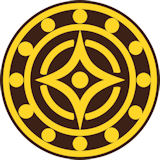
Inthawichayanon - พระเจ้าอินทวิชยานนท์ ist König von Chiang Mai. Er ist der letzte König von Lan Na (ล้านนา) als selbständiger, Siam tributpflichtiger Staat
Abb.: Inthawichayanon - พระเจ้าอินทวิชยานนท์
[Bildquelle: th.Wikipedia. -- Fair use]Seine Hauptgattin, Chao Thepkraison (เจ้าเทพไกรสร, 1841 - 1884) regiert faktisch anstelle ihres schwachen Gatten.
Abb.: Chao Thepkraison (เจ้าเทพไกรสร)
[Bildquelle: th.Wikipedia. -- Public domain]
1873 - 1887
Chao Luang Phrommaphiwong (เจ้าหลวงพรหมาพงษ์ธาดา) ist Fürst von Lampang (ลำปาง)
Abb.: Chao Luang Phrommaphiwong (เจ้าหลวงพรหมาพงษ์ธาดา)
[Bildquelle: th.Wikipedia. -- Public domain]
Abb.: Lage von Lampang (ลำปาง)
[Bildquelle: CIA. -- Public domain]
1873

Der König erlässt ein bürokratisches und soziales Reform-Programm "What the Council should do and what it should abolish"
1873
Es erscheint
กฏหมายเมืองไทย [Thai Recht] / [hrsg.] Dan Beach Bradley <1804 - 1873>. -- 1873
1873

Niederschlagung der Panthay-Rebellion (ပန်းသေး, 1856 - 1873), Du Wenxiu Rebellion - 杜文秀起義) chinesischer Muslime (Hui - حُوِ ذَو) in der Provinz Yunnan (雲南). Viele Hui (Chin Ho - จีนฮ่อ) fliehen nach Burma, Siam und Laos.
Abb.: Lage von Yunnan (雲南)
[Bildquelle: OpenStreetMap. -- Creative Commons Lizenz (Namensnennung, share alike)]
1873 - 1897
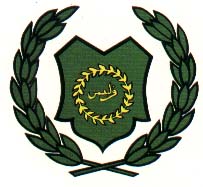
Raja Syed Ahmad Jamalullail (Syed Ahmad ibni al-Marhum Syed Hussain Jamalullail) (جمل الليل) ist Raja (راج) von Perlis (ﭬﺮليس) / Palit (ปะลิส). Drei Monate nach dem Tod seines Vorgängers reist Raja Syed Ahmad Jamalullail nach Bangkok und trinkt das Wasser der Gefolgschaft (ถือน้ำ). Rama V. bestätigt ihn als Raja von Perlis.
Abb.: Lage von Perlis (ﭬﺮليس)
[Bildquelle: Constables Hand Atlas of India, 1893. -- Pl. 59]
1873

König Chulalongkorn schafft die Prostration vor dem König ab. Er spricht zu einer Versammlung von auf dem Boden Kriechenden:
"His Majesty has noticed that the great countries and powers in Asia where oppression existed, compelling inferiors to prostrate and worship their masters, have ceased these customs ... They have done so to make manifest there shall be no more oppression ... His Majesty therefore proposes to substitute, in place of crouching and crawling on all-fours, standing upright with a graceful bow of the head ..." [Quelle: King Bhumibol Adulyadej : a life's work. Thailand's monarchy in perspective / ed. by Nicholas Grossman ; Dominic Faulder [u. a.]. -- Singapore : Didier Millet, 2011. -- 383 S. : Ill. ; 29 cm. -- ISBN 978-981-4260-56-5. -- S. 36]
1873
Cholera-Epidemie. 6.600 Tote, mehr Männer als Frauen.
Abb.: Cholera Alert!
[Bildquelle: UNICEF / WHO]
1873
Prinz Damrong Rajanubhab (สมเด็จพระเจ้าบรมวงศ์เธอ พระองค์เจ้าดิศวรกุมาร กรมพระยาดำรงราชานุภาพ, 1862 -1943) bringt aus Korat (โคราช) das Phün viang (ພື້ນວຽງ) mit, die Chronik Vientianes (ວຽງຈັນ). Er lässt es ins Thai übersetzen unter dem Titel พงศาวดารเจ้าอนุเวียงจันทน์ [Annalen von Chao Anou (ເຈົ້າອານຸວົງສ໌, 1767 - 1829) von Vientiane]. Das Phün viang ist in der Gegend von Pak Nam Mun (ปากน้ำมูล)entstanden und mündlich weit verbreitet. In diese Gegend waren von den Siamesen die Hofbrahmanen Vientianes 1827 zwangsweise umgesiedelt worden.
Abb.: Lage von Korat, Vientiane (ວຽງຈັນ) und Pak Nam Mun (ปากน้ำมูล)
[Bildquelle: OpenStreetMap. -- Creative Commons Lizenz (Namensnennung, share alike)]
1873

Handschrift der Petchaburi Version des Mahachat (มหาชาติเมืองเพชร), einer Version des Vessantara Jataka.
1871,1872 oder 1873

Chinesen stiften Wat Mangkon Kamalawat (วัดมังกรกมลาวาส) = Wat Leng Noei Yi (วัดเล่งเน่ยยี่/龍蓮寺).
Abb.: Lage von Wat Leng Noei Yi (วัดเล่งเน่ยยี่/龍蓮寺)
[Bildquelle: OpenStreetMap. -- Creative Commons Lizenz (Namensnennung, share alike)]
Abb.: Wat Leng Noei Yi (วัดเล่งเน่ยยี่/龍蓮寺), 2003
[Bildquelle: ScorpianPK / th.Wikipedia. -- Creative Commons Lizenz (Namensnennung, share alike)]
"Wat Mangkon Kamalawat (วัดมังกรกมลาวาส), previously (and still commonly) known as Wat Leng Noei Yi (Thai: วัดเล่งเน่ยยี่, Chinese: 龍蓮寺; pinyin: Lónglián Sì), is the largest and most important Chinese Buddhist temple in Bangkok, Thailand. It hosts celebrations of a number of year-round events, including Chinese New Year (春節), and the annual Chinese vegetarian festival (九皇爺/เทศกาลกินเจ).[1][2] It is located[3] in the district of Pom Prap Sattru Phai (ป้อมปราบศัตรูพ่าย) in the city's Chinatown, in a courtyard off Charoen Krung Road (ถนนเจริญกรุง), accessed by an alleyway.
HistoryWat Mangkon Kamalawat was founded as a Mahayana Buddhist temple in 1871[4] or 1872[2] (sources differ), by Phra Archan Chin Wang Samathiwat (พระอาจารย์จีนวังสสมาธิวัตร) (also known as Sok Heng - สกเห็ง), initially with the name Wat Leng Noei Yi. It was later given its current name, Wat Mangkon Kamalawat, meaning "Dragon Lotus Temple", by King Chulalongkorn (Rama V)."
[Quelle: https://en.wikipedia.org/wiki/Wat_Mangkon_Kamalawat. -- Zugriff am 2015-06-24]
1873
Die siamesische Regierung weist Phraya Saiburi (พระยา สายบุรี), den Gouverneur von Kedah (قدح) an, zusammen mit den Gouverneuren von Phuket (ภูเก็ต) und Phattalung (พัทลุง) Truppen zu entsenden, um die Briten bei der Bekämpfung der Piraten um Langkawi (لڠكاوي, in Kedah) zu unterstützen.
Abb.: Lage von Langkawi (لڠكاوي)
[Bildquelle: OpenStreetMap. -- Creative Commons Lizenz (Namensnennung, share alike)]
1873

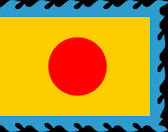
Der französische Marineoffizier François Garnier (1839 - 1873) zieht mit drei kleinen Schiffen und zwei Kompanien Soldaten nach Tonkin, um dem französischen Waffenhändler Jean Dupuis (1828 - 1912) aus der Klemme zu helfen (siehe: 1872-10-09). Garnier unternimmt dabei eine Expedition, die einen Handelsweg nach China sucht. Garnier erobert Hà Nội, wird aber von chinesischen Räubern, den "Schwarzen Bannern" (黑旗军, Quân cờ đen) getötet.
Abb.: Lage von Hà Nội
[Bildquelle: OpenStreetMap. -- Creative Commons Lizenz (Namensnennung, share alike)]
Abb.: Denkmal für François Garnier, Paris
[Bildquelle: Mbzt / Wikimedia. -- GNU FDLicense]Es erscheint:
Garnier, François <1839 - 1873>: Voyage d'exploration en Indo-Chine : effectue pendant les annees 1866, 1867 et 1868. -- Paris : Hachette, 1873. -- 4 Bde
Abb.: Carte generale de l'Indo-Chine
[a.a.O., Bd. 3]
Abb.: Laos - plan d'une pirogue
[a.a.O., Bd. 3]
Abb.: Laos siamois: Ruines de Vien Chan [Vientiane - ວຽງຈັນ ] : Wat Phra Kéo [ຫໍພະແກ້ວ]
[a.a.O., Bd. 4]
Abb.: Laos siamois: fête dans une pagode de Nong Kay (หนองคาย)
[a.a.O., Bd. 4]
Abb.: Lage von Vientiane (ວຽງຈັນ) und Nong Khai (หนองคาย)
[Bildquelle: OpenStreetMap. -- Creative Commons Lizenz (Namensnennung, share alike)]
1873
In London kommt erstmals eine größere Menge (200 Tonnen) siamesisches Teakholz auf den Markt.
1873

Es erscheint:
Bradley, Dan Beach <1804-1873>: Dictionary of the Siamese language. -- Bangkok, 1873. -- 828 S.
Abb.: Titelblatt
1873

Der dänische Kapitän Hans Niels Andersen (1852 - 1937) kommt nach Bangkok.
Abb.: Hans Niels Andersen
[Bildquelle: Johannes Hauerslev (1860–1921) / Wikimeadia. -- Public domain]
"Hans Niels Andersen (10 September 1852 – 30 December 1937) was a Danish shipping magnate, businessman and founder of the East Asiatic Company. Born into a working-class family in Nakskov, he trained as a shipbuilder before hiring on as a ship's carpenter in 1872. He came to Bangkok for the first time in 1873 and advanced to first mate and later master of a ship owned by the king of Siam. Subsequently, he entered the freight business in East Asia and later Europe. In 1885 he started his own company, Andersen & Co., which encompassed import/export, shipping, logging and sawmills.
Returning to Copenhagen, he opened a branch office of his company and in 1897, together with Isak Glückstadt (Isak Moses Hartvig Glückstadt, 1839 - 1910), director of the Danish Farmers' Bank (Den Danske Landmandsbank, Hypothek- og Vexelbank i Kjøbenhavn), founded the East Asiatic Company. This eventually became the largest company in Denmark, diversifying into shipbuilding, marine propulsion, insurance, etc., with branch offices all over the world.
During World War I, in which Denmark remained neutral, he went on missions to several countries, attempting unsuccessfully to initiate peace negotiations, but more successfully to secure Danish interests.
He was Siam's Consul General in Denmark 1898–1932, became titular Councilor of State (Danish: Etatsråd) in 1900, and was created Knight of the Elephant (Elefantordenen), the highest Danish order, in 1919."
[Quelle: http://en.wikipedia.org/wiki/Hans_Niels_Andersen. -- Zugriff am 2015-05-12]
1873

Es erscheint:
Die preussische Expedition nach Ostasien nach amtlichen Quellen. -- Berlin : Hofdruckerei. -- Bd. 4. -- 1873. -- 448 S. : Ill. -- Über Siam: S. 244 - 350
1873
Es erscheint:
Bacon, George B. (George Blagden) <1836-1876>: Siam, the land of the white elephant, as it was and is / compiled and arranged by George B. Bacon. -- New York : Scribner, 1873. -- 347 S. ; Ill. : 20 cm
Abb.: Titelblatt der Ausgabe von 1892
"This was the other side of the picture. And I draw out the incident in detail because it is characteristic of the strange conflict between the old barbarism [Pg 92] and the new enlightenment which meets one at every turn in the Land of the White Elephant. There are two tides—one is going out, the ebb-tide of ignorance, of darkness, of despotic power; and one is coming in—the flood-tide of knowledge and liberty and all Christian grace. And, as in the whirl of waters where two currents meet, one never knows which way his boat may head, so sometimes the drift of things is backward toward the Orient, and sometimes forward, westward, as the "star of empire" moves. Each rank has, or until quite recently had, some who crawl like crocodiles beneath it, and is in its turn compelled to crawl before the higher. Nor are the members of a nobleman's family exempt. I was introduced once to one of the wives of a fat, good-natured prince (a half-brother of the two kings), who was crawling around, with her head downward, on the floor. I offered my hand as politely as was possible, and she shuffled up to shake it, and then shuffled off again into a corner. It was very queer—more so than when I shake hands with Trip, the spaniel, for then we both of us understand that it is a joke—but here it was a solemn and ceremonious act of politeness, and had to be performed with a straight face. The good lady has her revenge, however, and must enjoy it, when she sees her fat husband, clumsy, and almost as heavy as an elephant, get down on his hands and knees, as he has to, in the presence of his majesty the king. I have been told that, when the Siamese embassy to Great Britain was presented to the queen, before anybody knew what they were about, the ambassadors were down on [Pg 93] all fours, at the entrance of the audience chamber, and insisted on crawling like mud-turtles into her majesty's presence. For, consistently enough, the court of Siam requires of foreigners only what etiquette requires in the presence of the king or president of their own country—but when its representatives are sent to foreign courts they carry their own usage with them. I felt a pardonable pride, and a little kindling of the "Civis-Romanus-sum" spirit, and an appreciable stiffening of the spinal column as I walked straight forward, while Prince George Washington crawled beside me. Blessed was the man who walked uprightly. Halleck, the sprightliest poet of his native State, in verse which will be always dear to all who love that good old commonwealth, has told us how a true son of Connecticut
"Would shake hands with a king upon his throne
And think it kindness to his majesty."Of course, then, as the king came toward the portico and met us at the door, that was the thing to do, being also the etiquette at the court of James Buchanan, who then reigned at Washington. But not even that venerable functionary, whose manners I have been given to understand were one of his strong points, could have welcomed a guest with more gentlemanly politeness than that with which this king of a barbarous people welcomed me. He spoke good English, and spoke it fluently, and knew how, with gentlemanly tact, to put his visitor straightway at his ease. It was hard to believe that I was in a re [Pg 94]mote and almost unknown corner of the old world, and not in the new. The conversation was such as might take place between two gentlemen in a New York parlor. On every side were evidences of an intelligent and cultivated taste. The room in which we sat was decorated with engravings, maps, busts, statuettes. The book-cases were filled with well-selected volumes, handsomely bound. There were, I remember, various encyclopædias and scientific works. There was the Abbottsford edition of the Waverly novels, and a bust of the great Sir Walter overhead. There were some religious works, the gift, probably, of the American missionaries. And, as if his majesty had seen the advertisements in the newspapers which implore a discriminating public to "get the best," there were two copies of Webster's quarto dictionary, unabridged. Moreover, the king called my particular attention to these two volumes, and, as if to settle the war of the dictionaries by an authoritative opinion, said: "I like it very much; I think it the best dictionary, better than any English." Accordingly the publishers are hereby authorized to insert the recommendation of the second king of Siam, with the complimentary notices of other distinguished critics, in their published advertisements. On the table lay a recent copy of the London Illustrated News, to which the king is a regular subscriber, and of which he is an interested reader. There was in it, I remember, a description, with diagrams, of some new invention of fire-arms, concerning which he wished my opinion, but he knew much more about it than I did. Some reference was made [Pg 95] to my native city, and I rose to show on the map, which hung before me, where it was situated, but I found that he knew it very well, and especially that "they made plenty of guns there." For guns and military affairs he had a great liking, and indeed for all sorts of science. He was expert in the use of quadrant and sextant, and could take a lunar observation and work it out with accuracy. He had his army, distinct from the first king's soldiers, disciplined and drilled according to European tactics. Their orders were given in English and were obeyed with great alacrity. He had a band of Siamese musicians who performed on European instruments, though I am bound to say that their performance was characterized by force rather than by harmony. He made them play "Yankee Doodle," and "Hail Columbia," but if I enjoyed it, it was rather with a patriotic than with a musical enthusiasm. When they played their own rude music it was vastly better. But the imperfections of the band were of very small importance compared with the good will which had prompted the king to make them learn the American national airs. That good will expressed itself in various ways. His majesty, who wrote an elegant autograph, kept up a correspondence with the captain of our ship for a long time after our visit. And when the captain, a few years later, had risen to the rank of Admiral, and had made the name of Foote illustrious in his country's annals, the king wrote to him, expressing his deep interest in the progress of our conflict with rebellion, and his sincere desire for the success of our national cause. [Pg 96] When kings and peoples, bound to us by the ties of language and kindred and religion, misunderstood us, and gave words of sneering censure, or else no words at all, as we were fighting with the dragon, this king of an Asiatic people, of different speech, of different race, of different religion, found words of intelligent and appreciative cheer for us. He had observed the course of our history, the growth of our nation, the principles of our government. And though we knew very little about him and his people, he was thoroughly informed concerning us. So that, as I talked with him, and saw the refinement and good taste which displayed itself in his manners and in his dwelling, and the minute knowledge of affairs which his conversation showed, I began to wonder on what subjects I should find him ignorant. Once or twice I involuntarily expressed my amazement, and provoked a good-natured laugh from the king, who seemed quite to understand it.
And yet this gentlemanly and well-informed man was black. And he wore no trousers—the mention of which fact reminds me that I have not told what he did wear. First of all, he wore very little hair on his head, conforming in this respect to the universal fashion among his countrymen, and shaving all but a narrow ridge of hair between the crown and the forehead; and this is cut off at the height of an inch, so that it stands straight up, looking for all the world like a stiff blacking-brush, only it can never be needed for such a purpose, because no Siamese wears shoes. I think the first king, when we called upon him, had on a pair of slippers, but the second king, [Pg 97] if I remember, was barefooted—certainly he was barelegged. Wound about his waist and hanging to his knees was a scarf of rich, heavy silk, which one garment is the entire costume of ordinary life in Siam. The common people, of course, must have it of cheap cotton, but the nobles wear silk of beautiful quality and pattern, and when this is wound around the waist so that the folds hang to the knees, and the ends are thrown over the shoulders, they are dressed. On state occasions something is added to this costume, and on all occasions there will be likely to be a wonderful display of jewels and of gold. So now, the light would flash once in a while from the superb diamond finger-rings which the king whom I am describing wore. He wore above his scarf a loose sack of dark-blue cloth, fastened with a few gold buttons, with a single band of gold-lace on the sleeves, and an inch or two of gold-lace on the collar. Half European, half Oriental in his dress, he had combined the two styles with more of good taste than one could have expected. It was characteristic of that transition from barbarism to civilization upon which his kingdom is just entering."
[a.a.O., Ausgabe von 1893. -- S. 92ff.]
1873

Wappen Siams (พระราชลัญจกรประจำแผ่นดินสยาม), entworfen von Prinz Pravij Jumsai.
Abb.: Wappen Siams (พระราชลัญจกรประจำแผ่นดินสยาม)
[Bildquelle: Sodacan / Wikipedia. -- GNU FDLicense]
"Das vom König Chulalongkorn 1873 vorgestellte Wappen wurde von Prinz Pravich Chumsai entworfen. Es ist symmetrisch zur Mittelachse angeordnet. Es zeigt die folgenden einzelnen Symbole:
- An der Spitze befindet sich die Große Krone des Sieges (Thai: พระมหาพิชัยมงกุฎ), das wichtigste der königlichen Insignien und Symbol der Königswürde.
- Direkt unter der Krone ist das Symbol der Chakri-Familie dargestellt, ein Diskus (Chakra) mit dem Tri, dem Dreiklingen-Schwert. Diese beiden Symbole zusammen stehen für die Könige der Chakri-Dynastie.
- Die Krone wird von zwei sieben-stufigen Schirmen flankiert, welche ebenfalls ein königliches Symbol sind.
- Rechts und links oben sind zwei weitere königliche Insignien dargestellt:
- das königliche Schwert des Sieges (Thai: พระมหาพิชัยมงกุฎ)
- und der königliche Stab (Thai: พระธารพระกร).
- Auf einer ausgebreiteten königlichen Robe wird der Schild von zwei mythologischen Fabeltieren gehalten:
- links von einem königlichen Löwen (Ratcha-Siha - Thai: ราชสีห์), der für das Beamtentum steht,
- und rechts von einem Elefanten-Löwen (Gatcha-Siha - Thai: คชสีห์, Kotchasi ), welcher die Armee symbolisieren soll.
- Der Schild selbst ist dreigeteilt.
- Das obere Drittel wird durch den thailändischen Teil des Königreiches, einem dreiköpfigen Elefanten, dem Erawan eingenommen. Die drei Köpfe sollen den Norden, den Süden und Zentralthailand symbolisieren.
- Auf dem unteren linken Drittel steht ein Weißer Elefant für die seinerzeitige Kolonie Laos,
- die beiden Kris im rechten Drittel stehen für die Kolonie Malaysia.
- Unterhalb des Schildes ist auf blauem Grund die Noparatana-Rajavaraporn-Halskette dargestellt, eine juwelenbesetzte Kette, die von den Chakri-Königen bei ihrer Krönung getragen wird.
- Unterhalb der Halskette ist ein Chula-Chomklao-Orden (Thai: เครื่องราชอิสริยาภรณ์จุลจอมเกล้า) abgebildet.
- Das Spruchband ganz zuunterst trägt eine Inschrift in der Pali-Sprache, der Sprache des buddhistischen Sangha. Sie ist in thailändischen Schriftzeichen verfasst und bedeutet etwa: Einigkeit bringt Glück.
Der Nachfolger von König Chulalongkorn, König Vajiravudh (Rama VI.), benutzte mit seiner Amtseinführung dieses Wappen nicht mehr. Jedoch tragen es thailändische Polizei-Offiziere noch heute an ihren Kopfbedeckungen."
[Quelle: http://de.wikipedia.org/wiki/Wappen_Thailands. -- Zugriff am 2012-06-20]
1873

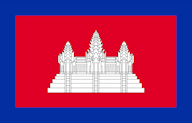
"By the early 1870s, the French authorities felt it was time for reform. In 1873, they drafted a royal ordinance, which they soon after submitted to King Norodom [von Kambodscha, ព្រះបាទនរោត្តម, 1834 - 1904] for ratification. It redefined and modified the rights and duties of the representative in legal matters, separating them from the prerogatives of the Cambodian courts. The ordinance, twenty-seven paragraphs long, eight clauses longer than the original Protectorate treaty, described the legal procedures to be used for resolving disputes involving Europeans. Criminal cases against Europeans became the exclusive domain of the colonial authorities, who could hear the case, decide the ruling, and execute the sentence without the intervention of a Cambodian magistrate, even if the victim of the crime was Cambodian. Cambodian authorities were to lend assistance to French authorities where required, helping, for example, to apprehend culprits, who were then to be handed over without delay to French authorities. Crimes committed by Europeans, even if involving locals, were thus moved beyond the reach of Cambodian judges. They could only refer them to the representative, and it was only he who had the authority to take action." [Quelle: Muller, Gregor [= Müller, Gregor] <1968 - >: Colonial Cambodia's 'bad Frenchmen' : the rise of French rule and the life of Thomas Caraman, 1840-87. -- London : Routledge, 2006. -- 294 S. : Ill. ; 23 cm. -- (Routledge studies in the modern history of Asia ; 37). -- ISBN 978-0-415-54553-2. -- S. 105. -- Fair use]
1873


Gründung der französischen Ecole du Protectorat in Phnom Penh (ភ្នំពេញ, Kambodscha). 1893 wird die Schule zum Collège du Protectorat, 1905 zum Collège Sisowath, 1933 zum Lycée Preah Sisowath (វិទ្យាល័យព្រះស៊ីសុវត្)
"Lycée Preah Sisowath (Khmer: វិទ្យាល័យព្រះស៊ីសុវត្ថិ) is a secondary school in Phnom Penh (ភ្នំពេញ), Cambodia. The school was founded in 1873 as a collège (middle school) and became a lycée (middle and high school) in 1933. It is named after King Sisowath I (ព្រះបាទស៊ីសុវតិ្ថ, 1840 – 1927). History
Under the initiative of François Fontaine, the first "modern" Franco-Cambodian school was established in the year 1873. It was the French-language School of the Protectorate, in Phnom Penh. The School of the Protectorate was renamed Collège of the Protectorate in 1893 and then Collège Sisowath in 1905. The Collège prepared students for service in the French colonial administration, the judiciary and the indigenous administration. During the French Protectorate, the school was heavily dominated by Vietnamese immigrant children.
In 1933, the Collège Sisowath became the Lycée Preah Sisowath. The first Cambodian students graduated from the Lycée Sisowath with baccalauréats in 1939. Only 144 Cambodians had completed the full baccalauréat by 1954. The Ministry of Education took measures to use the Khmer language at all education levels including Lycée Sisowath beginning in 1967.
During the Khmer Republic (សាធារណរដ្ឋខ្មែរ), the school was renamed twice: first to Lycée October 9 in 1970, after the date of the declaration of the republic by the Lon Nol (លន់ នល់, 1913 – 1985) regime, then to Phnom Daun Penh High School in 1974. Under the Pol Pot regime, the high school was closed and used as an army warehouse. The teachers, staff, and students were forced to leave the city and live in undeveloped areas, where they greatly suffered from the killings perpetrated.
After the January 7, 1979, Vietnamese invasion, the government of the People's Republic of Kampuchea (សាធារណរដ្ឋប្រជាមានិតកម្ពុជា) gradually reopened schools. The lycée was officially reopened on January 21, 1980, under the name of Phnom Daun Penh High School. School personnel requested the ministry of education to change the high school name to its original name of Lycée Preah Sisowath in 1993 to preserve this historic endowment.
In 1996, a Franco-Khmer section was reintroduced again at the Lycée Sisowath.
CampusLycée Sisowath occupies a 4 hectares (9.9 acres) lot bordering Norodom Boulevard donated by King Sisowath in 1905. The school has eight buildings and one administration center which retains its original French-influenced appearance. There is one football field, two volleyball fields and a basketball field.
CurriculumSee also: Secondary education in FranceThere are three special classes(ថ្នាក់ពិសេស) are selected upon written tests: Khmer literature, mathematics and physics.
Notable alumni
- Ieng Sary (អៀង សារី, 1925 – 2013, Khmer Rouge)
- Ieng Thirith (born Khieu Thirith) (អៀង ធីរិទ្ធ, 1932 – 2015, Khmer Rouge)
- Khieu Samphan (ខៀវ សំផន, 1931 - , Khmer Rouge)
- Khieu Ponnary (ខៀវ ពណ្ណារី, 1920 - 2003, Khmer Rouge)
- Nguyen Thi Binh (Nguyễn Thị Bình, born Nguyễn Châu Sa, 1927 - , Vietcong)
- Norodom Monineath Sihanouk (នរោត្ដម មុនីនាថ សីហនុ; born Paule Monique Izzi, 1936 - , Königinmutter)
- Norodom Yuvaneath (1943 - , Prinz)
- Pol Pot (ប៉ុល ពត, 1925 – 1998, Khmer Rouge)
- Sam Rainsy (សម រង្ស៊ី, 1949 - , Parlamentarier)
- Nhiek Tioulong (ញឹក ជូឡុង, 1908 – 1996, 1962 kurzzeitig Ministerpräsident)"
[Quelle: https://en.wikipedia.org/wiki/Lycee_Sisowath. -- Zugriff am 2016-11-26]
1873

Es erscheint der utopische Roman:
Éd. O'Farell [= Léo, Alfred] <1838 - >: Siam au vingtième siècle. -- Paris : Librairie des Bibliophiles, 1873. -- 91 S. ; 18 cm. -- "Fictional account of Thailand in 1973-1974"
Abb.: Titelblatt
"PRÉFACE L'auteur prie le public d’excuser les négligences de style qui peuvent se rencontrer dans cet ouvrage. Qu’on veuille bien ne pas oublier qu’il s’agit de lettres familières écrites à la hâte pendant un court séjour fait à Siam. Certes ces pages vieilliront rapidement; c’est le sort fatal de tous les récits de voyageurs. Les peuples changent en peu de temps, et telle description, exacte il y a dix ans, ne l'est plus aujourd’hui. Ce que l'auteur affirme, c’est qu’à la fin de Vannée 1973 Siam était bien tel que ce livre le dépeint.
Truth-House,
mai 1974"[a.a.O., S. 5f.]
1873

"Im Jahr 1873 bekam die japanische Schriftstellerin Hasegawa Shigure [長谷川時雨, 1879 - 1941] eines Tages einen großen Schreck, als ihre Mutter plötzlich „mit einem anderen Gesicht" vor ihr stand. Sie hatte sich die Augenbrauen nicht mehr abrasiert, trug ihre Haare offen, und ihre Zähne, die wie bei jeder japanischen Frau sonst immer künstlich geschwärzt [お歯黒] gewesen waren, strahlten nun in makellosem Weiß. Was Hasegawa damals erlebte, war nur eine von zahllosen Veränderungen, die den Beginn einer neuen Zeit in Japan dokumentierten. Die japanische Nation, einst Inbegriff des fernöstlichen Traditionalismus,
begann sich dem Westen zu öffnen und beendete damit eine jahrhundertelang währende Isolation."[Quelle: Hätten Sie's gewusst? -- Stuttgart [u. a.] ; Das Beste, 1992. -- ISBN 3-87070-410-1. -- S. 224.]
Abb.: Frau beim Zähneschwärzen (お歯黒) / von Utagawa Kunisada I (歌川 国貞, 1786 - 1865), 1820
[Bilduquelle: Wikipedia. -- Public domain]
1873
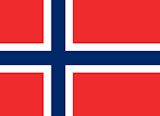
Der norwegische Arzt Gerhard Armauer Hansen (1841 - 1912) entdeckt den Erreger der Lepra, das Mycobacterium leprae
Abb.: Leprakranker 1891
Abb.: Verbreitung der Lepra 1891
[Quelle beider Abb.: Thin, George: Leprosy. -- London, 1891. -- Tab. i und ii]
1873

Es erscheint:
Lasègue, Ernest-Charles <1816 - 1883>: De l’Anorexie Histerique . -- In: Archives générales de MédecinIm gleichen Jahr erscheint eine englische Übersetzung in Medical Times.
Es ist eine der erste medizinische Beschreibungen der Esstörung Anorexia nervosa. In der zweiten Hälfte des 20. Jahrhunderts wird in Thailand Magersucht zu einer verbreiteten Krankheit.
1873

Die US-Amerikaner Joseph Glidden, Jacob Haish (1826 - 1926), Charles Francis Washburn, and Isaac L. Ellwood (1833 - 1910) erfinden den Stacheldraht. In Thailand wird der Stacheldraht vor allem bei bürgerkriegsähnlichen Zuständen eingesetzt werden.
Abb.: Aus der Patentschrift 1874-11-24
[Bildquelle: Wikipedia. -- Public domain]
Abb.: Stacheldraht, Bangkok, Proteste, 2013-11-23
[Bildquelle: Jason Jones. -- http://www.flickr.com/photos/13408725@N03/11177500285. -- Zugriff am 2013-12-04. -- Creative Commons Lizenz (Namensnennung, keine kommerzielle Nutzung, share alike)]
1873

Produktion des Gewehrs Winchester 73. "Zwischen 1873 und 1923 wurden über 720.000 Winchester Modell 73 hergestellt, davon 36 % Karabiner und 58 % Jagdgewehre, der Rest waren „Musketen“." (Wikipedia)
Abb.: Winchester Rifle 1873
[Bildquelle: Ricce / Wikimedia. -- Creative Commons Lizenz (Namensnennung)]
1873

Die französische Armee führt den revolver réglementaire modèle 1873 Chamelot-Delvign ein. Von 1873 bis 1887 werden 337 000 Exemplare hergestellt.
Abb.: Unten modèle 1873, oben modèle 1874
[Bildquelle: Rama / Wikipedia. -- Creative Commons Lizenz (Namensnennung, share alike)]
1873
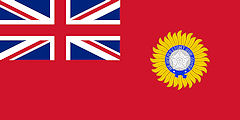
Captain Henry Adelbert Wellington FitzRoy Somerset, 9th Duke of Beaufort (1847 – 1924), Marquess of Worcester, bringt das indische Spiel Poonai (पूनाई ) mit nach England und spielt es auf seinem Landsitz im Ort Badminton. Das ist der Beginn des Rückschlagspiels Badminton.
Abb.: Lage von Badminton
[Bildquelle: OpenStreetMap. -- Creative Commons Lizenz (Namensnennung, share alike)]
Abb.: Badmintonspielerin, Bangkok, 2008
[Bildquelle: Ian Fuller. -- http://www.flickr.com/photos/18684820@N00/2868407636. -- Zugriff am 2013-09-27. -- Creative Commons Lizenz (Namensnennung, keine kommerzielle Nutzung)]
1873-03-01

USA: Beginn der Serienproduktion des großkalibrigen Patronenrevolvers Colt Single Action Army ("Peacemaker"). Bis 1941 werden über 350.000 Stück hergestellt.
Abb.: Colt Single Action Army ("Peacemaker") 1873
[Bildquelle: Hmaag / Wikimedia. -- GNU FDLicense]
1873-03-25 - 1913
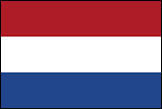
Krieg der Niederlande gegen das Sultanat Aceh (كسلطانن اچيه دارالسلام, Sumatra).
Abb.: Lage von Aceh
[Bildquelle: OpenStreetMap. -- Creative Commons Lizenz (Namensnennung, share alike)]
Abb.: Auf Patrouille in Aceh, 1880
[Bildquelle: Wikipedia. -- Public domain]
1873-03-25

Abb.: Thomas George Knox
[Bildquelle: th.Wikipedia. -- Public domain]Der britische Generalkonsul Thomas George Knox (1824 - 1887) an Außenminister Chao Phraya Bhanuwongse Maha Kosathibodi (Tuam Bunnag) (เจ้าพระยาภาณุวงศ์มหาโกษาธิบดี - ท้วม บุนนาค, 1830 - 1913):
"It is my duty as the representative of the British government to draw your attention to the evils arising from the want of any surveillance of your borders and to try to obtain a remedy - I have done this from time to time but I am sorry to say without the least effect... the greatest sufferers are of course your own people, but British subjects are also much injured by this state of affairs and trade which might be great is disappearing altogether. " [Zitiert in: Manich Jumsai [มานิจ ชุมสาย] <1908 - 2009>: History of Anglo-Thai relations. -- 6. ed. -- Bangkok : Chalermnit, 2000. -- 494 S. : Ill. ; 21 cm. -- S. 188]
1873-04-01

Der britische Generalkonsul Thomas George Knox (1824 - 1887) an Außenminister Chao Phraya Bhanuwongse Maha Kosathibodi (Tuam Bunnag) (เจ้าพระยาภาณุวงศ์มหาโกษาธิบดี - ท้วม บุนนาค, 1830 - 1913):
"...As, however, the Province (of Chiangmai [เชียงใหม่]) still remained subject to utter absence of all law and order, and many heavy claims of British subjects were still unsettled...I laid the request of the Viceroy before the Siamese government on August 9th. After repeated delay, usually caused by His Highness who...immediately left Bangkok and by so doing brought everything to a standstill...I then addressed a despatch to Your Excellency requesting immediate settlement of the sums due, and warning the Siamese government that interest would be claimed after the date stated. No notice was taken of the despatch, though I am aware that it was laid before His Highness. "It is however neither compatible with the position I have the honour to hold; and less so still with the dignity of the government I have the honour to represent in this matter, that I should be subject any longer to such treatment, and I beg to assure His Highness that I am not prepared again to submit to it, either now or on any future occasions. I beg likewise to assure the Siamese government that it is much more compatible with their dignity to settle an affair of this sort at once."
[Zitiert in: Manich Jumsai [มานิจ ชุมสาย] <1908 - 2009>: History of Anglo-Thai relations. -- 6. ed. -- Bangkok : Chalermnit, 2000. -- 494 S. : Ill. ; 21 cm. -- S. 192]
1873-04-02

Der britische Generalkonsul Thomas George Knox (1824 - 1887) an Außenminister Chao Phraya Bhanuwongse Maha Kosathibodi (Tuam Bunnag) (เจ้าพระยาภาณุวงศ์มหาโกษาธิบดี - ท้วม บุนนาค, 1830 - 1913):
British subjects "suffered from the oppressive and illegal acts of your Laos officials in Chiangmai [เชียงใหม่] ... For years past complaint after complaint has been made to me by British subjects trading in Chiangmai of the treatment they have received from the officers of the province...I have time after time begged of them to put the province in order and warned them of the consequence of delaying to do so." [Zitiert in: Manich Jumsai [มานิจ ชุมสาย] <1908 - 2009>: History of Anglo-Thai relations. -- 6. ed. -- Bangkok : Chalermnit, 2000. -- 494 S. : Ill. ; 21 cm. -- S. 188]
1873-04-09

Der britische Generalkonsul Thomas George Knox (1824 - 1887) an Außenminister Chao Phraya Bhanuwongse Maha Kosathibodi (Tuam Bunnag) (เจ้าพระยาภาณุวงศ์มหาโกษาธิบดี - ท้วม บุนนาค, 1830 - 1913):
Abb.: Lage von Suphan Buri (สุพรรณบุรี)
[Bildquelle: CIA. -- Public domain]
In connection with a robbery at Supan [Suphan Buri - สุพรรณบุรี] on British subjects, "I therefore again warn the Siamese they will not be long allowed to permit their country to be as it at present a complete nursery of dacoits who prey not only on their subjects but on those of Great Britain both in Siam and on British territory, and assure them that unless something is speedily done they must expect others more capable than themselves will interfere to arrest the growing evil." [Zitiert in: Manich Jumsai [มานิจ ชุมสาย] <1908 - 2009>: History of Anglo-Thai relations. -- 6. ed. -- Bangkok : Chalermnit, 2000. -- 494 S. : Ill. ; 21 cm. -- S. 188f.]
1873-04-19

Die britische Marine nimmt HMS Devastation in Betrieb, das erste Kriegsschiff ohne Segel.
Abb.: HMS Devastation, 1896
[Bildquelle: Wikipedia. -- Public domain]
1873-04-25

Paul-Louis-Félix Philastre (1837 - 1902) chef de la justice et inspecteur des affaires indigènes in französisch Cochinchina, legt in Saigon vor
Mémoire sur le project de substituer le Code pénal français au Code annamite
"It has become fashionable to shout out, in all manner of ways, that the Annamite population happily saw us come to deliver it from the oppression which weighed upon it and which it detested. To say that the
Annamites like all our reforms and are proud to live under our domination.That has been said, said again, written, printed in all fashions, so well that these mistakes have become articles of faith and are generally believed in very good faith.
We have thus reached the point of talking and acting in an atmosphere of convention where our illusions and our desires are taken for reality.
The extraordinary resistance, sometimes violent, sometimes passive in nature, day by day more hateful, which is opposed to us by all classes of the people, is stronger today than at any time since the conquest. It requires, nevertheless, that we open our eyes.
We have proclaimed unceasingly that we respect the customs and the institutions of the conquered people. It was in proclaiming this respect that we required our enemies to lay down their arms, and we pitilessly violate these customs and institutions. ...
The Annamites are very much aware of this situation, and I do not fear to affirm it, although with pain, to respect the truth, that far from progressing in the spirit of the population, we are less and less well regarded by the Annamites for whom we are no more than adventurers with an unrestrained greed, incapable of governing a people. This is their own estimation."
[Übersetzt in: Osborne, Milton E.: The French presence in Cochinchina and Cambodia : rule and response (1859-1905). -- Bangkok : white Lotus, 1997. -- 379 S. : Ill. ; 20 cm. -- ISBN 974-8434-00-1. -- "First published by Cornell Univ. in 1969". -- S. 45f.]
1873-05-06

Der britische Generalkonsul Thomas George Knox (1824 - 1887) an Außenminister Chao Phraya Bhanuwongse Maha Kosathibodi (Tuam Bunnag) (เจ้าพระยาภาณุวงศ์มหาโกษาธิบดี - ท้วม บุนนาค, 1830 - 1913):
"Therefore I beg now to inform the Siamese government that unless a settlement of these decisions is come to within the next two days, I shall cease all further correspondence on the subject, and after laying the matter before my government await the arrival of sufficient means with which to enforce the due payment of claims now withheld from British subjects by the frivolous excuses and needless delays of the Siamese government." [Zitiert in: Manich Jumsai [มานิจ ชุมสาย] <1908 - 2009>: History of Anglo-Thai relations. -- 6. ed. -- Bangkok : Chalermnit, 2000. -- 494 S. : Ill. ; 21 cm. -- S. 192f.]
1873-05-10

Der britische Generalkonsul Thomas George Knox (1824 - 1887) an Außenminister Chao Phraya Bhanuwongse Maha Kosathibodi (Tuam Bunnag) (เจ้าพระยาภาณุวงศ์มหาโกษาธิบดี - ท้วม บุนนาค, 1830 - 1913):
"As I believed myself, that the Siamese government were willing to take, and would take, the necessary measures to put a stop to the evils complained of...the last reason for their forbearances will avail you no longer; for it is impossible after what has lately taken place that I can put the least faith in any promises made to me by the Siamese government. "Having exhausted all the means in my power to obtain a friendly settlement of the petitioner's claims, I have now resource to other measures.
"I therefore demand, as the representative of Her Majesty's government, on behalf of the petitioners, that the whole of the amount due to the petitioners shall be paid before Saturday next. I also give the Siamese government notice that I shall reply to no more excuses brought forward for further delays."
[Zitiert in: Manich Jumsai [มานิจ ชุมสาย] <1908 - 2009>: History of Anglo-Thai relations. -- 6. ed. -- Bangkok : Chalermnit, 2000. -- 494 S. : Ill. ; 21 cm. -- S. 193]
1873-05-10

Der britische Generalkonsul Thomas George Knox (1824 - 1887) an Außenminister Chao Phraya Bhanuwongse Maha Kosathibodi (Tuam Bunnag) (เจ้าพระยาภาณุวงศ์มหาโกษาธิบดี - ท้วม บุนนาค, 1830 - 1913):
"If you continue to refuse this payment I shall on Saturday next send on officer of this Consulate to receive the half which has been offered, and he will at the same time serve you with the notice and protest usual on occasions when just claims have been withheld. "In regard to the negotiations entrusted to me in connection with the Provinces of Chiangmai [เชียงใหม่] and Raheng [ระแหง = Tak - ตาก] I shall allow them to remain in abeyance for the present, unless I have an ample apology for the slight passed on me in your despatch of the 17th instant.
"I will however not conclude this despatch without drawing the attention of the Siamese government to the grave position in which they have placed themselves.
"They have left the repeated requests...that steps might be taken for the suppression of dacoits who are in the habit of entering British possessions from Raheng and Chiangmai in order to rob and murder, completely unattended to for upwards of three years.
"Secondly, although it was well known’ to that it had long been the habit of their officials in Chiangmai to ill-treat and rob British subjects, they took no effectual steps to put a stop to such outrages.
"Thirdly, after a fair court had been appointed to settle these matters and had decreed what sums were justly due to the aggrieved British subjects, they have refused either to pay the amounts themselves or to enforce payment from those who committed the outrages.
"Fourthly, that on many occasions during the last six months they have treated the officer appointed by his government to arrange these matters with greatest disrespect, by breaking off all negotiations and leaving him without person in the place who had sufficient authority to bring them to a settlement.
"Finally, after evading nearly every promise made to me during the last six months - when the treatment I have received from them is presented in language which is mild indeed when compared to that treatment. They now, when evasion can no longer avail them, attempt to break off all further negotiations by pretending to take offence at those expressions and refusing to negotiate with me because I used them.
"This attempt however much you may try to remedy it hereafter must ever be apparent to anyone who reads your despatches and sees how constantly you have attempted to evade taking the requisite steps to bring the negotiations relating to the Province of Chiangmai to a satisfactory conclusion.
"For myself having dealt with you throughout the whole of these transactions with the greatest patience and moderation, I await the result with full conviction that every step I have taken in this matter will be approved of by my government and that I shall obtain ample redress for the slights which have been passed on me during the last six months."
[Zitiert in: Manich Jumsai [มานิจ ชุมสาย] <1908 - 2009>: History of Anglo-Thai relations. -- 6. ed. -- Bangkok : Chalermnit, 2000. -- 494 S. : Ill. ; 21 cm. -- S. ]
1873-05-22

Der Regent für Rama V., Somdet Chaophraya Borommaha Si Suriyawong (สมเด็จเจ้าพระยาบรมมหาศรีสุริยวงศ์, aka. Chuang Bunnag - ช่วง บุนนาค, 1803 - 1883) beschwert sich bei der britischen Regierung über das Verhalten von Generalkonsul Thomas George Knox (1824 - 1887):
"For among the Burmese and Tongsoo [ต้องสู้?] who work in the teak forests are many crafty men, who dispute with one another and then when the Chief of Chiangmai [เชียงใหม่] has decided in favour of one of them, the other who has lost the case, brings an action at Bangkok against the Chief for oppression. The timbers were not seized by the Chief of Chiangmai, but were transferred from one British subject to the other. Then two years ago the Chief died. "In many of the trials there was no defendant present. The Chief mainly concerned was dead and had no notice of them when alive. His successor knew little about them, so no satisfactory solution could be made.
"The cases tried at the British Consulate by a court composed of two Siamese officers, Mr. Newman, a consular officer, and Mr. Read, a merchant of Singapore. When the case of Mong Hmong was called, the British Consul General, although not one of the judges, decided it himself, the Siamese judges not understanding why.
"The Consul-General called for the principal cases, those involving the largest amounts of money, and pressed for a hasty decision - hasty decisions were given in favour of the British subjects. The pleaders on both sides prayed that might not be so hurried on, but there might be some adjournment for them to study their cases, but by the Consul-General's order the court declined the adjournment applied for, hurried on their work and gave a very hasty judgement, in cases of a most difficult nature to come to the truth of although easy to prove by one or two false witnesses in the absence of many means of testing the witnesses at Bangkok or producing counter evidence.
"...But I am very much grieved indeed that the British Consul-General should insult the Siamese government.
"Merely because in this one matter his demand for immediate payment has not been complied with, he has written that he has no longer any faith in the solemn assertion (Kam Patiyarn) of the Siamese government and had threatened to resort to "other measures"....
"He has before this applied the course expression "Ap-pree" (blackguard) to a Siamese minister of the highest rank.
"...If he does not respect our assurances we can devise no means of dealing with him...But I believe it is not possible that the present British Consul General should any longer be allowed to negotiate with us on Indian affairs. His insolence is beyond the endurance of the Siamese government."
[Zitiert in: Manich Jumsai [มานิจ ชุมสาย] <1908 - 2009>: History of Anglo-Thai relations. -- 6. ed. -- Bangkok : Chalermnit, 2000. -- 494 S. : Ill. ; 21 cm. -- S. 193 - 197]
1873-05-28

Der britische Vizekonsul Henry Alabaster (1836 - 1884) an Außenminister Granville George Leveson-Gower, 2. Earl Granville (1815 - 1881):
"Burmese and Taungsoo gypsies came to work teak forests in Chiangmai [เชียงใหม่]. By the terms of the Treaty, they enjoyed immunity above their Asiatic natives. At the least excuse, these men came to Bangkok and claimed heavy damages from the Chief who has dared to meddle with them. They returned to the Chief with a letter with a great seal directing him to investigate or sometimes even to settle the case so that no more complaint will be heard, or to come to Bangkok. Rather than be at the expense and inconvenience of a journey to Bangkok, the chief pays them to be silent. But if he be obstinate he has to come to Bangkok and take his chances, trial in the place where he is probably ill provided with the means of defealing false evidence. "....The awards gained by British subjects in some of these cases laid the foundation of their fortunes.
"..The claims were ridiculously exaggerated and often based on next to nothing..."
[Zitiert in: Manich Jumsai [มานิจ ชุมสาย] <1908 - 2009>: History of Anglo-Thai relations. -- 6. ed. -- Bangkok : Chalermnit, 2000. -- 494 S. : Ill. ; 21 cm. -- S. 197f.]
1873-06-01


Der Franzose Frédéric Thomas de Comnène-Caraman (1840 – 1887) über die Kambodschaner in L'Independent de Saïgon <Saigon>:
"If one must judge by Stobée's [Johannes Stobaios - Ἰωάννης Στοβαῖος, 5. Jhdt.] aphorism, that 'it is by his customs that can judge a free man' it must be recognized that the Khmer [ខ្មែរ] people are found wanting, since they are born, live, and die in slavery." [Übersetzt in: Osborne, Milton E.: The French presence in Cochinchina and Cambodia : rule and response (1859-1905). -- Bangkok : white Lotus, 1997. -- 379 S. : Ill. ; 20 cm. -- ISBN 974-8434-00-1. -- "First published by Cornell Univ. in 1969". -- S. 48]
1873-06-04

Royal Ordinance for the Finance Office (พระราชบัญญัติสำหรับหอรัษฎากรพิพัฒน์): Einrichtung eines Steuerdepartment (REvenue Department), an das die Zahlungen der Steuerpächter gehen statt wie bisher an die einzelnen Ministerien.
1873-08-04 - 1873-08-08
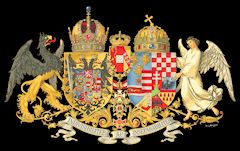
Wien: im Rahmen der Wiener Weltausstellung (1873-05-01 - 1873-11-02) findet der Internationale Patentkongress statt. Man macht Empfehlungen für international akzeptierte Patentgesetze.
1873-08-16

Der britische Außenminister, Außenminister Granville George Leveson-Gower, 2. Earl Granville (1815 - 1881), an den Regenten für Rama V., Somdet Chaophraya Borommaha Si Suriyawong (สมเด็จเจ้าพระยาบรมมหาศรีสุริยวงศ์, aka. Chuang Bunnag - ช่วง บุนนาค, 1803 - 1883):
"Sir, I have the honour to acknowledge the receipt of your note of May 22,1873 which has been communicated to me by Mr. Mason [D. K. Mason, Konsul Siams in London], and I beg to acquaint you in reply that having carefully considered that note and the correspondence which accompanied it, and weighed it with the reports of Mr. Knox [Thomas George Knox, 1824 - 1887], HM Consul General in Siam, and with others received from the British government in India, I see no reason to disapprove of Mr. Knox's conduct in pressing for an early settlement of British claims and for the adoption of efficient measures of the Siamese government for securing the British frontier and British subjects from injury and molestation on the side of Chiangmai [เชียงใหม่]. I can only express a hope that by this time all causes of difference will have been removed, and that the relations between the Siamese government and Mr. Knox will have been replaced on their former amicable footing, to promote which Mr. Knox will be insisted to apply himself." [Zitiert in: Manich Jumsai [มานิจ ชุมสาย] <1908 - 2009>: History of Anglo-Thai relations. -- 6. ed. -- Bangkok : Chalermnit, 2000. -- 494 S. : Ill. ; 21 cm. -- S. 198]
Das India Office (London) an den britischen Generalkonsul Thomas George Knox, 1824 - 1887:
Abb.: "British rule in India": Thomas George Baring, 1st Earl of Northbrook / von Leslie Ward (1851 - 1922)
[Bildquelle: Vanity Fair. -- 1876-12-09 / Wikimedia. -- Public domain]
"They [India Office] are prepared to accept the promises of the Court of Siam that the balance due from the Chief should be paid within six months, and that if such were the case the claim for interest might be waived." "The government of Siam, after declaring that they cannot further negotiate with Mr. Knox, express their desire to send an envoy to Calcutta to confer directly with the Indian government on this Chiangmai [เชียงใหม่] affair, and also with a view to drawing up a convention for the establishment of a state of better order on the British Burmese frontier. This proposal was accepted to by the Viceroy [Thomas George Baring, 1st Earl of Northbrook, 1826 - 1904]."
[Zitiert in: Manich Jumsai [มานิจ ชุมสาย] <1908 - 2009>: History of Anglo-Thai relations. -- 6. ed. -- Bangkok : Chalermnit, 2000. -- 494 S. : Ill. ; 21 cm. -- S. ]198f.
1873-08-23


Der französische Misisonar Pierre Louis Emile Rousseau (1845 - 1922) berichtet:
There is "a great number of the most influential mandarins who do not want to hear mention of reform." [Übersetzung: Battye, Noel Alfred <1935 - >: The military, government, and society in Siam, 1868-1910 : politics and military reform during the reign of King Chulalongkorn. -- 1974. -- 575 S. -- Diss., Cornell Univ. -- S. 150f.]
1873-09-20

20. Geburtstag des Königs: In Siam weht ein neuer Wind.
"In other ways the new order of things was revealed. When the Foreign Minister gave an evening party to the members of the European community in honour of the twentieth birthday of the king, it was noted by the chronicler that the Siamese present "all stood, moved about, and conversed freely as men. There was no humiliating prostration, no crawling about on all-fours, as is the daily practice in the houses of the representatives of Old Siam. They conversed with each other with the graceful freedom of refined Europeans, and looked on approvingly while the European ladies did their best to make the occasion, the gathering, and the amusements of the evening agreeable. Many Siamese ladies were present. They were spectators and observers, but took no prominent part in the performances of the evening." The Western leaven was indeed working under the inspiriting example of the young monarch, who from the very first day of his reign aspired to discharge a progressive role."
[Quelle: Arnold Wright in: Twentieth century impressions of Siam : its history, people, commerce, industries, and resources / ed. in chief: Arnold Wright. -- London [etc.] : Lloyds, 1908. -- S. 67]
1873-09-25 - 1873-10-10


Rama V. (1853 - 1910) ist Mönch im Wat Bowonniwet (วัดบวรนิเวศวิหาร)
Abb.: Lage des Wat Bowonniwet (วัดบวรนิเวศวิหาร)
[Bildquelle: OpenStreetMap. -- Creative Commons Lizenz (Namensnennung, share alike)]
Abb.: Rama V. als Mönch, 1873
1873-11-16

Zweite Königsweihe (Krönung) Ramas V.
1873-11-16

Stiftung von The Most Illustrious Order of Chula Chom Klao (เครื่องราชอิสริยาภรณ์ จุลจอมเกล้า): Der Hausorden wird vorrangig an Angehörige des Königshauses und mit diesem verwandten Personen verliehen. Dazu kommen dem Königshause treue Beamte mit besonderen Verdiensten um das Land. Er wird ausschließlich an Thais verliehen.
ausführlich: http://www.payer.de/thailandchronik/ressourcen.htm
Phongpaichit, Pasuk <ผาสุก พงษ์ไพจิตร, 1946 - > ; Baker, Chris <1948 - >: Thailand : economy and politics. -- Selangor : Oxford Univ. Pr., 1995. -- 449 S. ; 23 cm. -- ISBN 983-56-0024-4. -- Beste Geschichte des modernen Thailand.
Ingram, James C.: Economic change in Thailand 1850 - 1870. -- Stanford : Stanford Univ. Pr., 1971. -- 352 S. ; 23 cm. -- "A new edition of Economic change in Thailand since 1850 with two new chapters on developments since 1950". -- Grundlegend.
Akira, Suehiro [末廣昭] <1951 - >: Capital accumulation in Thailand 1855 - 1985. -- Tokyo : Centre for East Asian Cultural Studies, ©1989. -- 427 S. ; 23 cm. -- ISBN 4896561058. -- Grundlegend.
Skinner, William <1925 - 2008>: Chinese society in Thailand : an analytical history. -- Ithaca, NY : Cornell Univ. Press, 1957. -- 459 S. ; 24 cm. -- Grundlegend.
Mitchell, B. R. (Brian R.): International historical statistics : Africa and Asia. -- London : Macmillan, 1982. -- 761 S. ; 28 cm. -- ISBN 0-333-3163-0
Smyth, H. Warington (Herbert Warington) <1867-1943>: Five years in Siam : from 1891 to 1896. -- London : Murray, 1898. -- 2 Bde. : Ill ; cm.
ศกดา ศิริพันธุ์ = Sakda Siripant: พระบาทสมเด็จพระจุลจอมเกล้าเจ้าอยู่หัว พระบิดาแห่งการถ่ายภาพไทย = H.M. King Chulalongkorn : the father of Thai photography. -- กรุงเทพๆ : ด่านสุทธา, 2555 = 2012. -- 354 S. : Ill. ; 30 cm. -- ISBN 978-616-305-569-9
Bacon, George B. (George Blagden) <1836-1876>: Siam, the land of the white elephant, as it was and is / compiled and arranged by George B. Bacon. -- New York : Scribner, 1873. -- 347 S. ; Ill. : 20 cm